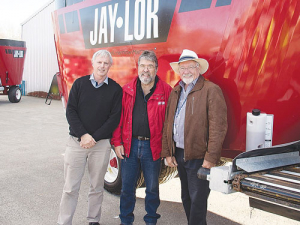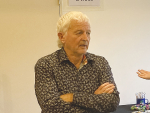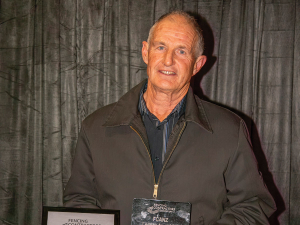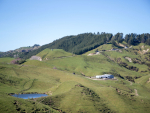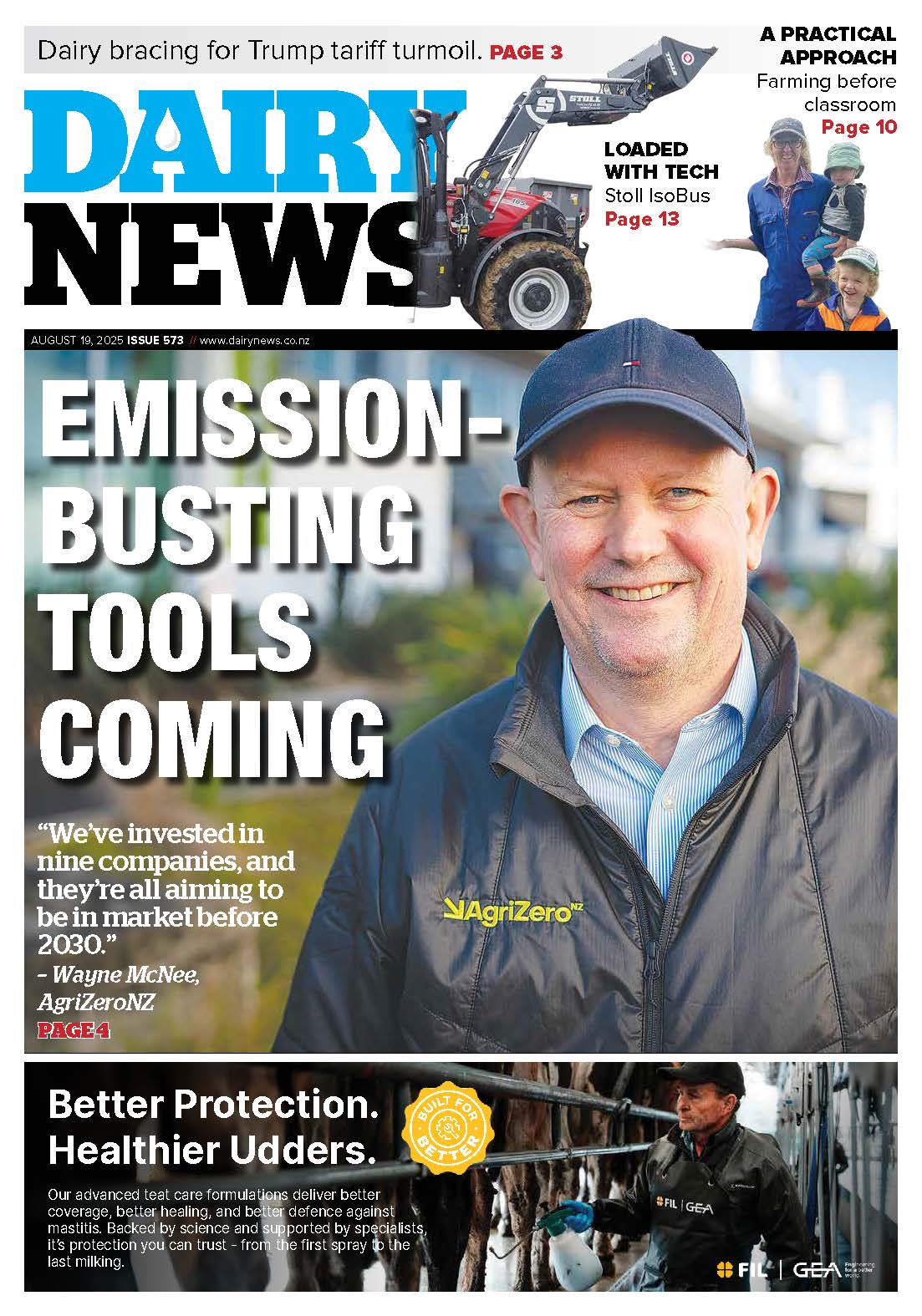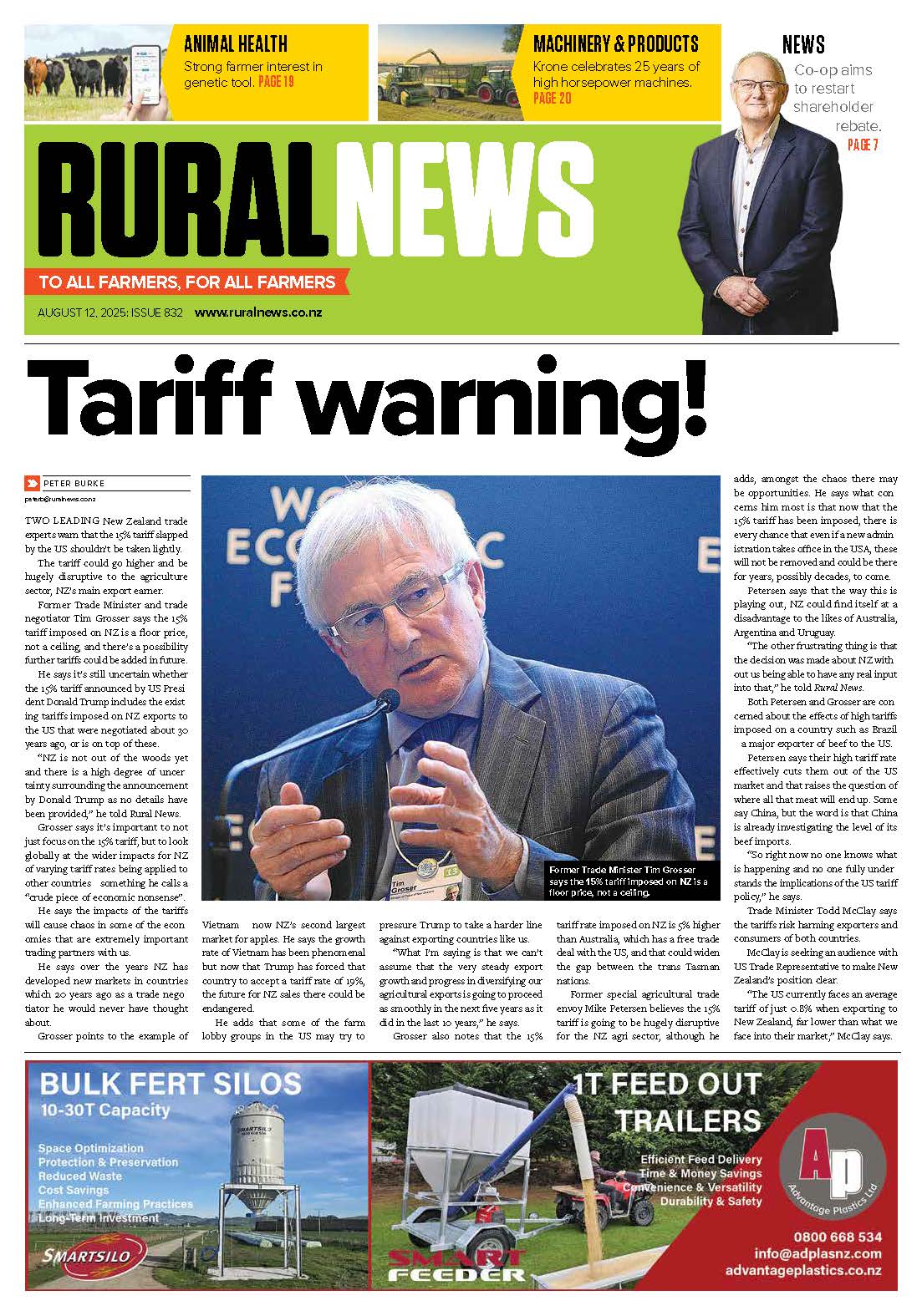Looking at different mechanical layouts can cause confusion, but ultimately the finished product must be the key driver. A good TMR (total mixed ration) machine must combine disparate ingredients into one homogenous mix that resists separation by animals during eating.
Why consider a TMR machine for feeding in the first place, especially given that New Zealand is the land of low inputs and plentiful grass? This question was posed by visiting ruminant nutritionist Alan Vaage, on tour for Jaylor Nutrition.
Vaage said production is limited on pasture alone, with PMR or TMR offering major benefits beyond the NZ practice of in-parlour feeding of meal or nuts.
He cited trials showing that cows fed a TMR had the potential to produce 50% more milk per day than pasture-only fed animals (Kolver and Muller 1998). And the dry matter content of pasture -- about 19% versus TMR at 58% -- means cows find it physically impossible to eat enough to maximise production.
He quoted Bargo’s research in 2003 that noted the total DMI of dairy cows on pasture-only diets is lower than the total DMI of dairy cows consuming TMR or pasture plus supplements. This indicated that high-producing cows on pasture-based diets need to be supplemented to achieve their genetic potential for DMI and thus milk production.
The traditional NZ practice of feeding in-parlour or at a feed pad obviously offers benefits, he said. However, it also raises issues -- not least the time required to consume the supplement, the high cost of specifically formulated products, sorting by dominant or smart animals due to lack of incorporation, and limited opportunities to use cost-effective by-products.
PMR or TMR allows cows to achieve higher milk yields, thus reaching their potential, particularly at peak, versus more cows of lower production on a larger area. This latter point could address the green brigade’s claim that NZ has reached ‘peak cow’ and must reduce numbers.
Vaage said TMR allows farmers to overcome the intake limits of forage or pasture-only diets, while also addressing the issues of acidosis or digestive upset when high levels of grain are fed over silage and consumed in short times.
He stressed correct attention to detail in adopting a PMR or TMR regime. The first is that a mix must be homogenous so it can’t be sorted by clever animals, and it must be a consistent mix for feeding along the feed barrier or trough.
“Sorting or non-uniform mixes had been proven to lead to around 0.3% drop in fat levels and a 10% drop in overall production,” Vaage explained. “So in a herd of, say, 250 cows, this might lead to a loss in monetary terms not dissimilar to the cost of a mixer wagon.”
During feeding, animal behaviour clearly indicates the quality of the mix, he said. Sorting shows up as cows shaking feed and making ‘bowls’ in the feed to find preferred ingredients, rather than just eating.
Sorting leads to problems of increased milk proteins, poor hooves, displaced abomasums and fat cows in sorter cows. By contrast, non-sorters have access to lower energy content, they are thinner and produce less.
Vaage advocated sampling and analysing the individual ingredients of a TMR mix.
“The mix, often blamed for poor results, is nothing but the composite function of the ingredients’ composition and the accuracy of the delivery and weighing.
“To do this accurately, all ingredients need to be tested on the same day, as well as holding accurate weights of the ingredients used in each batch.”





